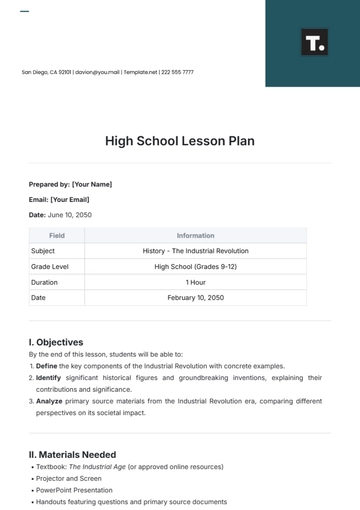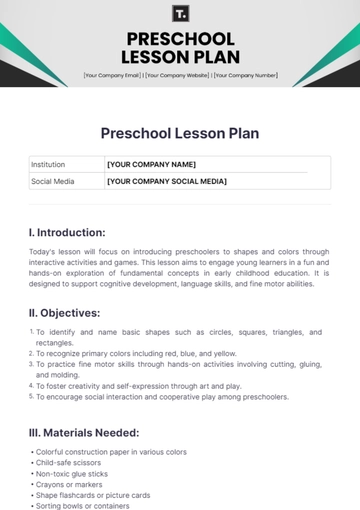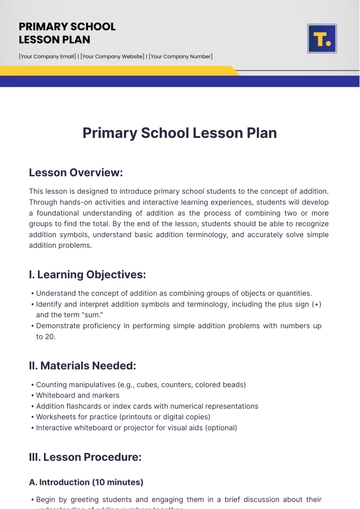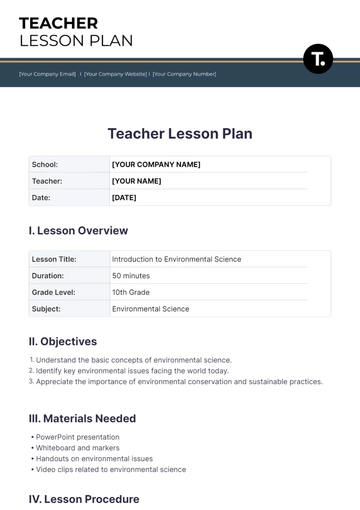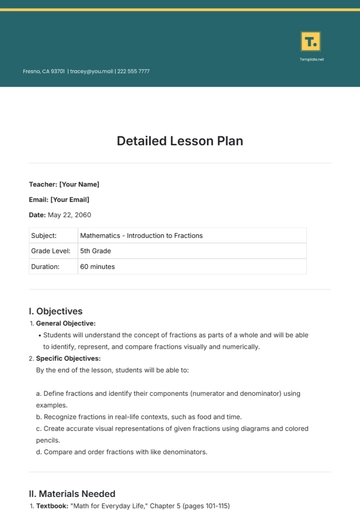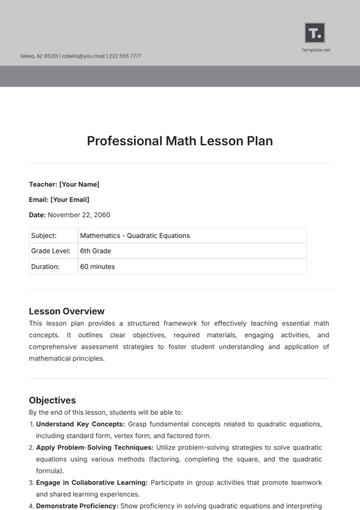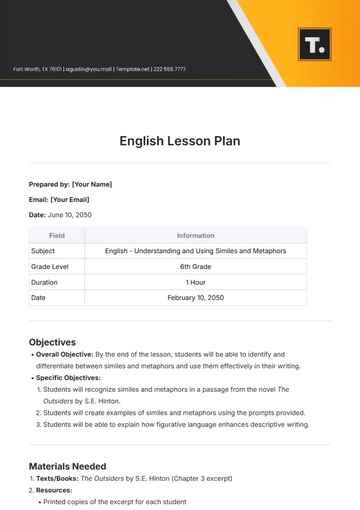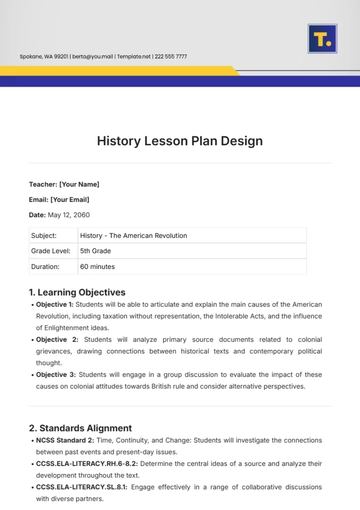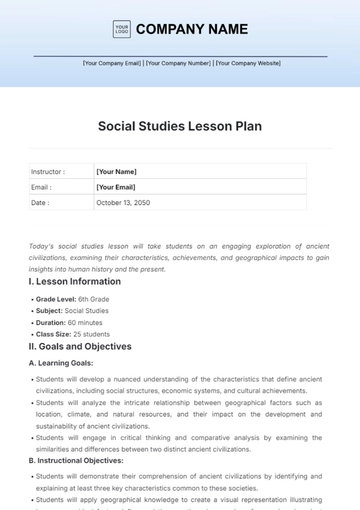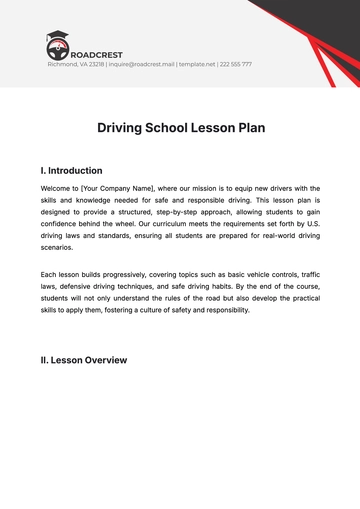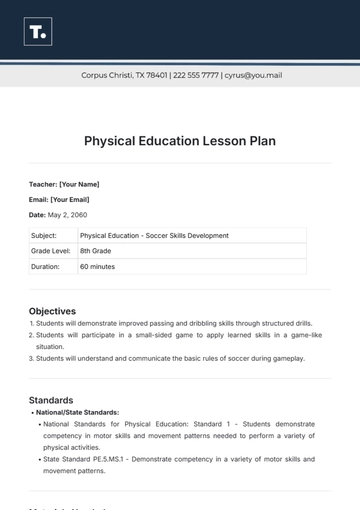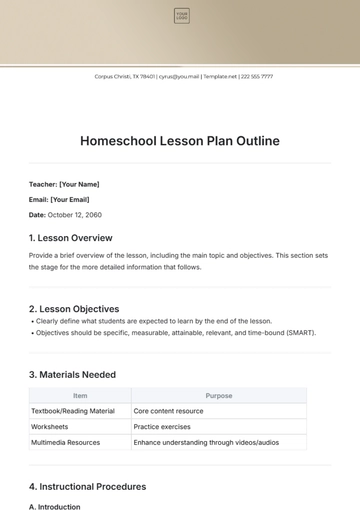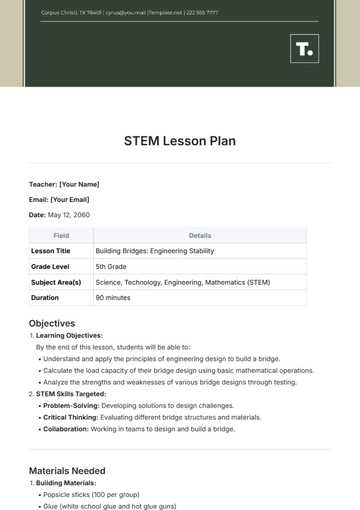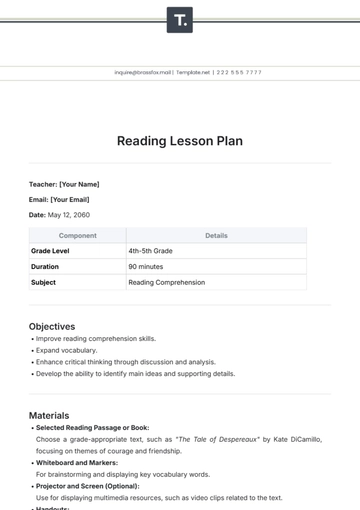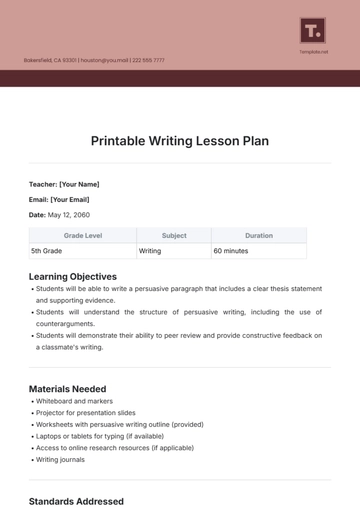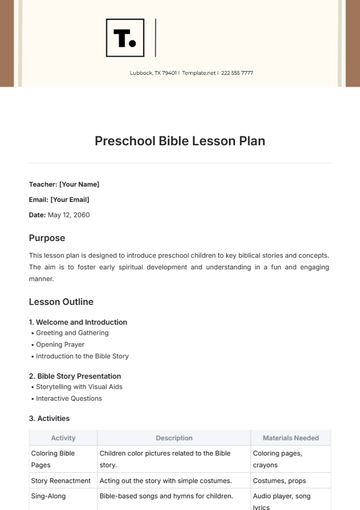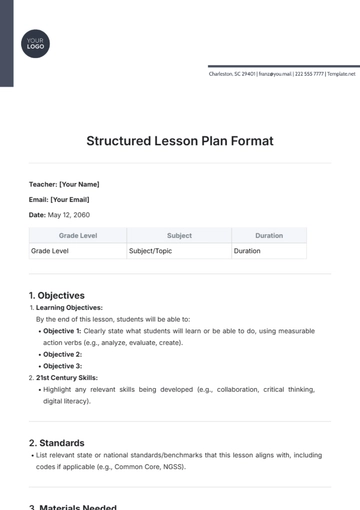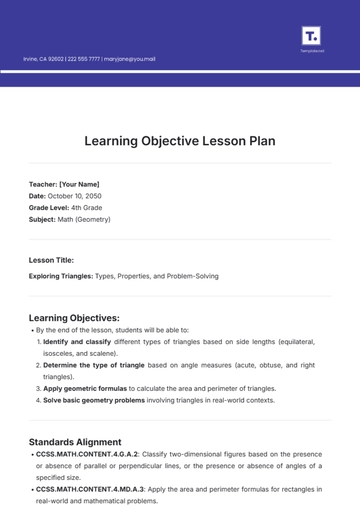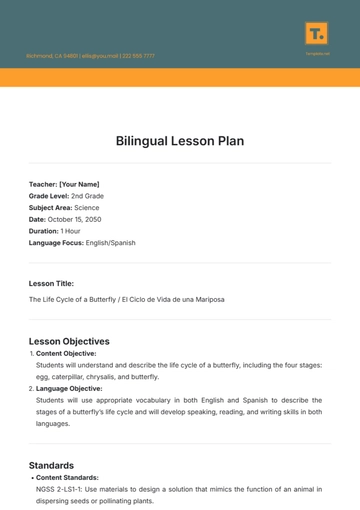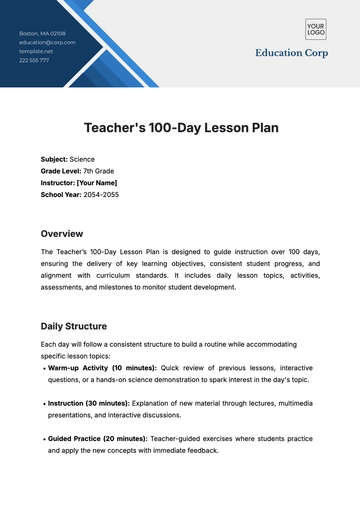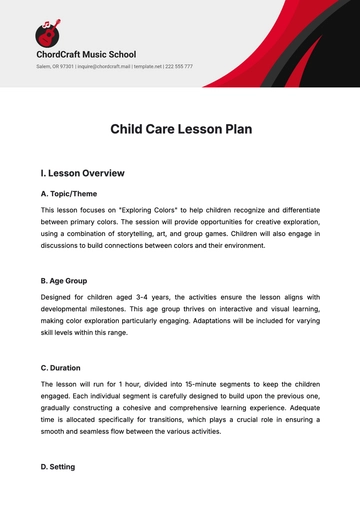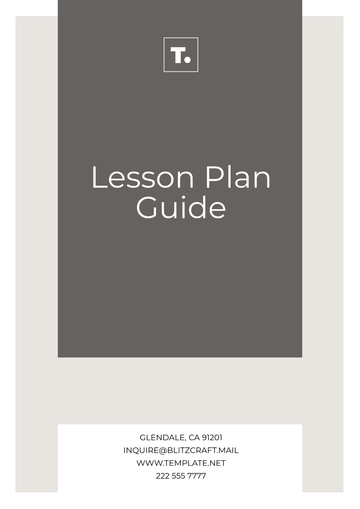Free Social Studies Lesson Plan

Instructor : | [Your Name] |
Email : | [Your Email] |
Date : | October 13, 2050 |
Today's social studies lesson will take students on an engaging exploration of ancient civilizations, examining their characteristics, achievements, and geographical impacts to gain insights into human history and the present.
I. Lesson Information
Grade Level: 6th Grade
Subject: Social Studies
Duration: 60 minutes
Class Size: 25 students
II. Goals and Objectives
A. Learning Goals:
Students will develop a nuanced understanding of the characteristics that define ancient civilizations, including social structures, economic systems, and cultural achievements.
Students will analyze the intricate relationship between geographical factors such as location, climate, and natural resources, and their impact on the development and sustainability of ancient civilizations.
Students will engage in critical thinking and comparative analysis by examining the similarities and differences between two distinct ancient civilizations.
B. Instructional Objectives:
Students will demonstrate their comprehension of ancient civilizations by identifying and explaining at least three key characteristics common to these societies.
Students will apply geographical knowledge to create a visual representation illustrating how geographical factors influenced the growth and expansion of an assigned ancient civilization.
Students will actively participate in group discussions, articulating their thoughts coherently and respectfully while comparing and contrasting two ancient civilizations.
C. Assessment Objectives:
Assess student understanding through a short quiz that evaluates their knowledge of fundamental concepts and characteristics of ancient civilizations.
Evaluate the effectiveness of student-created visual representations in conveying the relationship between geography and ancient civilizations.
Monitor and assess student participation in group discussions, focusing on their ability to engage critically with the material and contribute constructively to the conversation.
III. Materials and Resources
A. Materials:
World map to display geographical features and ancient civilizations' locations - Whiteboard and markers for brainstorming and visual aids
Printed handouts containing essential information on ancient civilizations for reference
Art supplies such as colored pencils, markers, and construction paper for creating visual representations
B. Texts and References:
Textbook: "Ancient Civilizations: A Comprehensive Guide" by [Author]
Online resources: National Geographic's website on ancient civilizations for additional research and multimedia content
C. Technology:
Classroom projector and screen for displaying maps and multimedia presentations
Internet access for conducting research and accessing online resources
IV. Lesson Procedures
Time | Activity |
|---|---|
0-10 mins | Introduction: Overview of the lesson objectives and expectations for student engagement. |
10-30 mins | Lecture and Discussion: Presentation on the characteristics and significance of ancient civilizations, followed by a guided discussion on key themes and concepts. |
30-50 mins | Comparative Analysis Activity: Students work in pairs to compare and contrast two assigned ancient civilizations based on provided primary and secondary sources. |
50-70 mins | Group Presentations: Each pair presents their findings to the class, facilitating further discussion and analysis. |
70-90 mins | Written Reflection: Students individually reflect on the relevance of studying ancient civilizations to understanding contemporary societal issues and submit their reflections. |
V. Assessment
Formative Assessment: Monitor student engagement in group tasks, offer feedback, and perform spot checks for understanding, clarifying doubts as necessary.
Summative Assessment: Assess students' grasp of ancient civilizations and their geographic effects through quizzes and evaluate their visual representations for critical thinking, creativity, and comprehension.
Feedback Mechanism: Give targeted feedback on quizzes to identify strengths and improvement areas. Provide constructive feedback on group presentations, focusing on content and presentation skills. Promote self-reflection on individual contributions in group discussions to enhance self-awareness and ongoing improvement.
VI. Differentiation and Adaptability
Tailor readings and resources to accommodate varying levels of familiarity with the subject matter.
Offer additional support and guidance to students who may require extra assistance in analyzing primary sources or formulating arguments.
VII. Reflection
Reflect on the effectiveness of the lesson in promoting critical thinking and scholarly inquiry.
Consider adjustments for future lessons based on student feedback and areas of improvement identified during the class session.
- 100% Customizable, free editor
- Access 1 Million+ Templates, photo’s & graphics
- Download or share as a template
- Click and replace photos, graphics, text, backgrounds
- Resize, crop, AI write & more
- Access advanced editor
Unlock your teaching potential with the Social Studies Lesson Plan Template from Template.net. This fully customizable, editable template is designed to streamline your planning process. Easily personalize each section using our intuitive Ai Editor Tool, ensuring every lesson is tailored to your student's needs. Elevate your teaching experience today with this indispensable asset.
